“In principle all instruction should be based on historical evolution;
there should be no obligation to make a specialized study of musicology,
but a knowledge of texts of the past, recent or remote, should form a foundation”
~ Pierre Boulez (Nattiez 1985: 119)
This essay will define how and what I learned to master a solid foundation in music theory and harmony through formal and informal learning commensurate with first-rate college level education as exemplified in courses at Columbia University, Harvard University, Oberlin College and Berklee College of Music. Much of the information I have learned about music theory and harmony is demonstrated in my compositions, 15 CD’s and performance history. Additionally, what I learned about species counterpoint will be covered in this essay. Although references to guitar technique, performance and composition are occasionally made to underscore how I learned music theory and harmony, a future essay will address “Advanced Guitar and Performance Technique” and the essay “Musical Composition and Structured Improvisation” was published here four weeks ago. Therefore, it is not my objective to address those subjects in this essay.
Supporting documents (SD) and endnotes, which further clarify and substantiate theory and harmony scholarship, are not included but will be supplied upon request. I have been learning and engaged with music harmony and music theory for over 30 years and I have a deep knowledge of these subjects. I learned music theory and harmony in a variety of formal environments including one-on-one private instruction and in classroom situations. Using Alfred’s Basic Guitar Method I learned many music theory fundamentals with my first guitar instructor, Vincent Pattaglia, including staff notation, rhythmic notation, pitch, tuning systems, tetrachords, scales and chords.[i] Later, in private instruction with retired professional guitarist Joe Yurko, I wrote out intervals, scales and harmonization of major and minor scales in every key. Additionally, I learned to read lead sheets with chord symbols and other subjects.[ii] In Physics class I learned about string vibrations, frequency of a wave, pitch, nodes, and harmonics. These scientific discoveries provided the basis for early music theory (Grout 1980:56). In a two-semester high school music theory course, I learned the subjects in the six book series, Master Theory, by Charles Peters.[iii] To supplement my studies I used Walter Piston’s Harmony. Rhythmic dictation, transcription, and group solfeggio was emphasized in class. For my final paper in this class I orchestrated Beethoven’s “Moonlight Sonata” for a small ensemble. This honed my skills in transposition and part writing.
With professional jazz guitarist Harry Leahy I harmonized all major and minor scales to the 13th while learning 7th, 9th, 11th, and 13th arpeggios; drop 2 and 3 voicings as practical solutions for 7th chord inversions; and other subjects from a variety of sources.[iv]
Being self-motivated, I learned music theory and harmony through personal music studies.
With The Wes Montgomery Jazz Guitar Method, I learned Montgomery’s use of octave’s (1968:9-11), double octave’s (13), harmonization of chord tones and non-chord tones using minor 7th, half-diminished, and diminished 7th chords on neighbor and passing tones (15-16). From Montgomery’s songs I learned popular music forms, jazz melodies, arpeggios and phrases. Jack Petersen’s Jazz Styles & Analysis: Guitar is an anthology of transcribed guitar solos from famous recordings spanning 1935-1977. Each transcription includes theoretical analysis from which I learned about harmony and musical concepts. For example, with the analysis of Pat Metheny’s solo on “Bright Size Life” I learned Metheny’s pentatonic scale superimposition technique to create a “Lydian sound” over major 7th chords (1979:53).
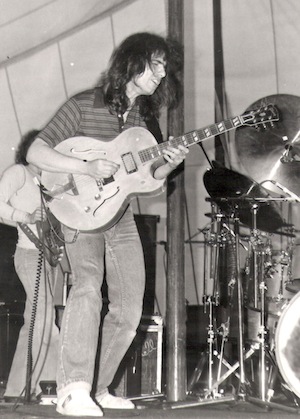
Pat Metheny (circa 1980?) with his Gibson ES175. Note the toothbrush at the bottom of the guitar’s body.
With John Amaral’s Modal and Tonal Improvisation and Jazz/Rock Soloing, I learned applications of Joseph Schillinger methods to scales and rhythms as well as jazz theory for use of chord scales, cycles, melodic shape inversions, Middle Eastern rhythms, modal scales and songs, and rhythmic superimposition. Through music theory articles in Guitar Player magazine, I learned about slurs, a variety of expression marks and how to produce them on the guitar. These slurs and expressions include legato and staccato playing, bent notes, slides, hammer ons and pull offs. When I learned Bach’s Bouree, I learned about tonal and real/chromatic sequences (Kostka 2009:103) as he used it in the “bridge” section and the Picardy third (365). From Ted Green’s Chord Chemistry I learned voice-leading techniques. I learned the harmonic mechanisms in the music I played including the less common circle of fourths progression in the folk song “Hey Joe”. Through analysis I learned the forms of the jazz, rock and classical music I performed including binary, ternary, 12 bar blues, 8 bar blues, the uncommon 19 bar blues form used in “Good Morning Little School Girl” and the 14 bar blues form in “Hot ‘Lanta” by The Allman Brothers Band. Much of the R&B, blues, and gospel music I performed used cadential six-four (Piston 1987: 158-162) and passing six-four chords (165). I learned about add 2 and add 9 chords through learning Steely Dan songs such as “Deacon Blues”. With the transcribed scores of John McLaughlin and the Mahavishnu Orchestra, I learned how intricate pentatonic melodies, arpeggios based on altered dominants, and complex meters such as 7/4, 9/8, 10/8, 11/8,13/8, 14/8, 15/8, 18/8 and 19/8 may be combined.
After high school, I received additional, more in-depth, formal training in music theory and harmony at Musicians Institute [MI] (SD_cv, SD_mi_diploma_records) where I excelled at four semesters of ear training; theory courses; fretboard harmony; harmonizing major, minor and exotic scales to the 13th; in depth form and harmonic analysis of principles in all eras of Jazz. With the guitar in my hands 16 hours a day, I was required to apply my knowledge of rhythms, music theory and harmonic analysis by making choices regarding scale/chord combinations, harmonic substitutions and alterations, superimposition techniques, etc, all predicated on knowledge of intervals and rhythmic variety. Furthermore, music theory and harmonic analysis was applied to Brasilian music, other music from around the world, pop music, the music of The Beatles and many other artists; analysis of jazz progressions; pentatonic and melodic minor scale superimposition; writing 12 tone scales; and development of triads, seventh chords, sequences and melodic phrases from the eight note symmetrical diminished scale, also known as the octatonic scale. At MI, I learned hundreds of jazz standards, often transposing progressions to all keys. This sharpened my voice leading abilities using 7th, 9th, 11th and 13th chords. I learned the concept and use of secondary dominants and varieties of substitutions for those dominants as a way to tonicize chords in a song (Kostka 2009: 260). Substitutions may include secondary leading tone chords (277) or their minor third or tritone equivalents.
In addition to formal course work at MI, I learned theory and harmony directly from several professional guitarists. From personal instruction with guitarist Joe Diorio and through his books Fusion and Twenty-First Century Intervallic Designs, I learned bebop gestures, added note chords, chord melody, quartal harmony, octave displaced scales, and modern intervallic designs derived from major, minor, chromatic and symmetrical scales.
From guitarist Steve Freeman I learned to harmonize and “melodicize” symmetrical scales by linking together triads. With Scott Henderson I learned to superimpose minor pentatonic scales and melodic minor modes over traditional jazz progressions. From Don Mock I learned chord melody moves using parallel, similar, oblique and contrary motions, and various reharmonization techniques like back cycling devices, tritone substitution, minor third substitution and parallel chromatic movement.
From specific books I learned advanced tonal theory concepts. With Howard Roberts books, Guitar Manual Chord Melody and Super Chops, I learned uncommon chord voicings using a myriad of extensions and alterations along with single note melodies that wove together the harmonies.
From Kynaston’s book Michael Brecker – Improvised Saxophone Solos, along with the audio recordings of the original works, I transposed saxophone melodies to the guitar and learned intricate post bop solos that utilize chromaticism, polytonal tetrachordal phrasing, and whole tone phrases. As is common in jazz, I began to employ “quotations” in my improvisations and compositions. I realized later through studies and personal conversations with composer George Rochberg in 1998 that this occurred in 20th century music by Ives, Stravinsky, Messiaen, Stockhausen, and Berio (Kostka 1990:168-70). When I studied Schoenberg’s Structural Functions of Harmony, the concept of monotonality – the many possibilities of harmonic regions any given tonality may explore through closely and distantly related keys – transformed my perception of tonal modulation within a composition (Schoenberg 1969:20).
[v] From Schoenberg’s Theory of Harmony, I learned about chords with six or more tones, how Schoenberg orchestrated to soften dissonance in Erwartung (418), and other subjects.[vi] Using the “Scale of Dynamic Markings” in Gardner Read’s Music Notation, I learned to produce variations in dynamics using fast tremolo picking (1979:250), along with octave signs (43-47), mordents, inverted mordents and turns (245-46).
The formal and informal studies discussed above prepared me for the advanced theory and harmony studies with Dennis Sandole (SD_sandle_rec_bio) that later shaped my individual sound.
In 1987 I began weekly studies with Sandole, which lasted for 13 years. I learned sophisticated harmonic structures; sight singing through A New Approach To Sightsinging and Modus Novus; singing sequential intervallic studies on major, minor, symmetrical, exotic and synthetic scales, and many other rigorous subjects.[vii] Additionally, with Sandole’s Guitar Lore, I learned strong root movement progressions using diatonic, augmented, diminished, and chromatic degrees (1984: 40-41). From Hindemith’s Craft of Musical Composition – vol.1, I learned about chord progressions through interval roots (68-89), chord roots (94-106) and harmonic tension (106-18, 158-64). With Sandole, and Stefan Kostka’s book,[viii] I learned cadences more in depth as a way to more sensitively perceive music as a language.
I learned species counterpoint using Sandole’s outline, Strict Counterpoint – Canti Fermi from Antonio Salieri (unpublished).Other texts I consulted included The New Harvard Dictionary of Music: counterpoint (1986: 205-208), imitation (389-391), canons (128-130); Mann’s The Study of Counterpoint from Johann Joseph Fux’s Gradus Ad Parnassu; Jadassohn’s Manual of Counterpoint, Kennan’s Counterpoint; Procter’s Tonal Counterpoint; Mann’s The Study of Fugue. Additionally, I studied the chromatic modulation of Wagner’s Tristan und Isolde (Piston 1987:475) and Wagner’s counterpoint in Die Meistersinger von Nürnberg. Later I learned from Pillin’s Some Aspects of Counterpoint in Selected Works of Arnold Schoenberg.
Using Adolph Sandole’s Fourth Chords and Scales, I learned the theory and use of quartal harmony with three to seven note 4th chords and inversions. I transcribed, transposed for the guitar, and learned many quartal chord examples by pianist McCoy Tyner such as from “A Love Supreme”, “Passion Dance”, “My Favorite Things” and “Impressions”.
I learned Jimi Hendrix’s use of quintal sonorities in “Little Wing” and “Castles Made of Sand” and composed my own examples.
I learned new rhythmic patterns by studying from books that drummers used such as A Complete Method for Rhythmical Articulation (Bona 1900). Likewise, I learned concepts of accents, phrasing and polyrhythms that are idiomatic to jazz (Bellson 1963), Brasilian music (Fonseca 1991), West African rhythms (Hartigan 1995), Afro-Cuban rhythms (Goines 1990), and complex rhythmic and meter patterns (Chaffee 1976).
As the above concepts informed my musical sensibilities and approaches to theoretical analysis, I learned jazz from listening, transcription and analysis, and Bebop studies. These studies helped me learn to outline harmony through melodies and superimposition of chord changes.[ix]
Additional subjects related to theory and harmony included learning about the difference between pitch and pitch class (Kostka 2009: 542) and octave numbers and their relationship to the piano and guitar (3). Through studying Penderecki’s “Threnody for the Victims of Hiroshima”, I learned about the composition’s structure, sound effects, and texture as a form determinant (Kostka 1990: 235-37, 250 and Clendinning 2011: 806, 817).
Furthermore, in order to learn about the sound of older instruments, I listened to recordings of the historical uses of equal tempered instruments.
I studied Schenkerian analysis to compliment traditional music theory perspectives I had learned. Through studying Salzer’s Structural Hearing – Tonal Coherence in Music, vols. 1&2, I learned that Schenkerian Analysis is a music theory that seeks to perceive the coherence and unity of all the musical details of a given piece as organic offshoots of the whole (Salzer 1962: 283).[x]
Despite the fact that there is a cumulative effect from all of the above studies, I have returned to many theory and harmony books to refresh my perspectives during creative processes. For instance, as I was writing pop and rock songs in 2009, I began to reinvestigate homophonic harmony utilizing the concepts found in some new and old books I had used (Piston 1987), (Kostka 2009), (Clendinning 2011).
This essay expresses that a learned comprehensive foundation of music theory and harmony. Mastery of advanced theoretical and harmonic principles is substantiated through my success as a performer, composer and teacher for the past 35 years (SD_cv). I have mastered intro and advanced level subjects such as rhythm, pitch, scales and modes, consonance and dissonance, dynamics and articulation, texture, form and part writing. I have a professional level of proficiency that allows me to deeply participate with the challenges of contemporary musical expression.
END NOTES
[i] Alfred’s Studies – I learned that music is written on a staff, how to read music on the spaces and lines of the Treble (G) clef , the function of accidentals and extra ledger lines, whole and half steps on the guitar, the letter names of pitches, that music is divided into measures with bar lines, rhythmic durations (whole , half, quarter, eighths, triplets, sixteenths), how to count rhythmic durations, duple, triple and quadruple meters, simple and compound time signatures, rest values, dotted note rhythms, repeat signs, first and second ending signs, pickup/anacrusis measures, ties, use of accidentals, enharmonic tones, chord symbols.
[ii] Joe Yurko studies – I learned major, minor, perfect, diminished and augmented intervals, tetrachordal construction, major key signatures and their relationship to the circle of fifths, major scale construction in every key, the function and use of accidentals, harmonization of all major scales as triads and seventh chords, the relative relationship between major and natural minor scales, construction of all natural minor scales, harmonic and melodic minor scale construction in all keys, harmonization of all minor scales as triads and then as seventh chords, major and minor pentatonic scales, the hexatonic minor blues scale, triad and 7th chord arpeggios, triad inversions, transcription techniques. By ear I learned an E7+9 from the Jimi Hendrix song “Purple Haze”. I learned the chord name and theory from Yurko. I also learned that the intro of this song emphasizes an augmented 4th interval. Later, I became aware of the use of the tritone (three steps) in lydian scales and as dominant 7th chord substitutions.
[iii] Master Theory Books – From Book 1: I learned how the musical staff and clefs work to identify pitches, how to read music on the spaces and lines of the Bass (F) clef , Moveable C-clef, the function of the C-clefs, whole and half steps on the piano; Book 2: alla breve, triple meters, syncopation, hemiola patterns; Book 3: chromatic scales, expression and dynamic marks, signs and abbreviations, moveable “do” solfeggio, transposition by interval, syllable and by scale degree number, complex time signatures, two part diatonic harmony with voices added a third or 6th below, scale degree names with roman numerals, basic conducting baton technique. Book 4: Harmonizing a melody with I and IV, neighbor and passing tones, subdominant triads and dominant 7th chords in all keys, melody writing with only chord tones, melody writing using neighbor and passing tones, harmonizing a melody with the “principle chords” (I, IV, V, V7), minor scale harmonic accompaniment. Book 5: major and minor close and open position voicings, first and second inversion triads in closed and open position with roman numerals and bass position symbols, four part writing in Hymn tunes, first, second and third inversions of the dominant 7th with roman numeral and bass position symbols, triads and dominant 7th chord inversions in minor keys applied to four part chorale writing, part writing, voice leading of the 4th to the 3rd and the 7th to the 1, static, parallel, similar, oblique and contrary motions, four part choral arrangements (soprano, alto, tenor, bass), the range of each voice, use of “secondary chords” in part writing, writing for Bb, Eb, and F transposing instruments, writing for a saxophone quartet, brass quartet, clarinet quartet, and piano accompaniments. Book 6: The study of form, phrase and period, the use of a “bridge” in A-A-B-A form, types of cadences (perfect/authentic, imperfect/incomplete, half, plagel), suspensions, anticipations, appoggiaturas, modulation, pivot chords, the form of military marches, 9th chords, Diminished 7th chords, string section writing, consecutive dominant 7th movements also known as back cycling, diatonic substitution, pedal point, parallel and closely related keys.
[iv] Harry Leahy Studies – I learned to count, feel and notate the subdivision of the beat from 1-12 notes. I learned the theoretical and practical applications of major, minor and symmetrical scales; 7th arpeggios and inversions; sight singing using Melodia; modal chord progressions; tetrachordal formulas; composition of bass lines with jazz standard melodies; and many jazz standards. I adapted works from Bela Bartok’s Mikrokosmos for guitar and learned concepts such as the use of folk music, imitation and inversion, contrary motion, canon at the octave, imitation by mirroring, canon a fifth below, modes, free canon, augmentation & diminution, and alternating meters. Later I learned about pentachords and related pitch class sets in “Bulgarian Rhythm” (Clendinning 2011: 726-731). With Leahy I developed my reading abilities from violin etude books by Wohlfahrt, Kreutzer, and with the Charlie Parker Omnibook, I sharpened my skills to recognize intervals, form, voice leading, and melodic development. I learned Pat Martino’s minor conversion approach to superimposition (Martino 1983). I learned about minor 3rd and major 3rd key cycles. As I learned jazz standards I realized the importance of understanding the sequential progressions involving the circle of fifths employed in a composition as a way to better memorize the songs.
[v] Schoenberg – I learned about many types of cadences, the Neapolitan sixth chord and interchangeability of major and minor.
[vi] From Theory of Harmony I also learned about consonance and treatment of dissonance; alterations of triads, seventh chords and ninth chords; modes; modulation; the relationship between rhythm and harmony; chorale harmonization. Imaginative chord progressions throughout the book continue to inspire me to compose.
[vii] Sandole studies included rhythm studies; added note scales and chords; 5-12 note scales; accents for uncommon phrase lengths and structures; harmonization of bitonal scales; harmonization of polytonal scales; doubly chromatic chord etudes; multi-octave scales and modes; single syllable, moveable and fixed “do” solfeggio. Unique voice-leading concepts created an enriched vertical and horizontal harmonic awareness. I learned a thorough use of the Neapolitan chord as preparations for the V and as functions for any other harmonic region. The b6 in major was emphasized in the voice leading in even the most abstract studies. I studied and learned from Sandole’s theory outline by composing all scales (major, harmonic minor, melodic minor, dominant, whole tone, diminished) to the 13th.
[viii] Cadences – An authentic cadence (AC) is V to I. The Perfect Authentic Cadence (PAC) has the “1” in the soprano over the I chord and is the most final sounding cadence (Kostka and Payne 2009:155). The Imperfect Authentic Cadence (IAC) is any authentic cadence that is not a PAC (156). Deceptive Cadences (DC) are when the V goes to something other than I. These abound in jazz compositions. The Half Cadence and the Phrygian half cadence. I intuitively sensed that some cadences, like the DC and HC, help the harmonic movement progress while others, like the PAC and IAC, are more or less conclusive (159).
[ix] From Baker’s How to Play Bebop: Vols. 1-3, and Jazz Improvisation, I learned 8 note Bebop scales, phrase endings; techniques of deflection and enclosure; chord tone spins; embellishment; perpetual motion studies; II-V7 major patterns; III-VI-II-V patterns; II-V7 minor patterns; cycle of 5th patterns; free jazz dramatic devices. With Coker’s books Patterns for Jazz, I learned advanced Hard Bop patterns using diminished scale polychords, Lydian Augmented, and chromatic wholetone scale combinations.
[x] Schenkerian Analysis – In this theory, distinctions between chords of structure and chords of prolongation are emphasized (Salzer 1962: 11-13) and chords that are used for motion, direction and embellishment have a horizontal tendency and are called contrapuntal chords (Salzer 1962: 15). From Schachter’s Unfoldings – Essays in Schenkerian Theory and Analysis, I learned about the perception of a long range structure called the Fundamental Structure (Ursatz) and means of prolongation such as arpeggiation, interruption and neighbor note. Jonathan Dunsby’s article “Schoenberg and the Writings of Schenker” states that Schoenberg made an intensive study of Schenker in 1922-23(1977: 27), though he disagreed with Schenker’s premises.
BIBLIOGRAPHY
Aebersold, Jamey. 1976. Play-Along Series: A New Approach to Jazz Improvisation, Vol. 6: Charlie Parker – All Bird. New Albany, IN: Jamey Abersold Jazz.
———. 1978. Play-Along Series: A New Approach to Jazz Improvisation, Vol. 12: Duke Ellington. New Albany, IN: Jamey Abersold Jazz.
———. 1983. Play-Along Series: A New Approach to Jazz Improvisation, Vol. 28: John Coltrane – 8 Jazz Originals. New Albany, IN: Jamey Abersold Jazz.
———. 1986. Play-Along Series: A New Approach to Jazz Improvisation, Vol. 38: Classic Songs From the Blue Note Jazz Era. New Albany, IN: Jamey Abersold Jazz.
———. 1991. Play-Along Series: A New Approach to Jazz Improvisation, Vol. 47: I Got Rhythm Changes In All Keys. New Albany, IN: Jamey Abersold Jazz.
———. 1994. Play-Along Series: A New Approach to Jazz Improvisation, Vol. 61: Burnin’!!! – Up-Tempo Jazz. New Albany, IN: Jamey Abersold Jazz.
———. 1996. Play-Along Series: A New Approach to Jazz Improvisation, Vol. 75: Countdown to Giant Steps. New Albany, IN: Jamey Abersold Jazz.
——— and Sloane, Ken. 1978. Charlie Parker Omnibook. New Albany, IN: Jamey Abersold Jazz.
Amaral, John. 1976. Guitar Modal and Tonal Improvising. Boston, MA: Freelance Music.
———. 1978. Guitar Jazz-Rock Soloing. Boston, MA: Freelance Music.
Baker, David. 1974. Jazz Improvisation. Van Nuys, CA: Alfred Publishing.
———. 1975. How to Play Bebop, Vols. 1-3. Van Nuys, CA: Alfred Publishing.
———. 1980. The Jazz Style of John Coltrane – A Musical and Historical Perspective. Miami, FL: CPP\Belwin, Inc.
———. 1982. The Jazz Style of Clifford Brown. Miami, FL: CPP\Belwin, Inc.
Barlow, Wayne. 1953. Foundations of Music. New York: Appleton-Century-Crofts.
Bartok, Bela. 1967. Mikrokosmos Vol. 1-6. New York: Boosey & Hawkes.
Batish, Shiv Dayal and Ashwin Batish. 1989. Ragopedia – Exotic Scales of Northern India – vol. 1. Santa Cruz, CA: Batish Publications.
Bauer, Bob, musical ed. 1988. The New Real Book, Volumes 1-3. Petaluma, CA: Sher Music.
Belkadi, Jean Marc. 1997. The Diminished Scale for Guitar. Milwaukee, WI: Hal Leonard.
Bellson, Louis. 1963. Modern Reading Text. Rockville Centre, NY: Belwin Mills.
Berkowitz, Sol with Gabriel Fontrier and Leo Kraft. 1986. A New Approach to Sight Singing. New York, NY: W.W. Norton & Co.
Berliner, Paul. 1994. Thinking in Jazz- The Infinite Art of Improvisation. Chicago: University of Chicago Press.
Birnie, W.A.H.. 1969. The Reader’s Digest Family Songbook – 124 All-Time Popular Songs. Pleasantville, NY: Reader’s Digest Association.
Blum, David. 1980. Casals and the Art of Interpretation. Los Angeles, CA: University of California Press.
Bona, Pasquale. 1900. A Complete Method for Rhythmical Articulation. New York: Carl Fisher.
Chaffee, Gary. 1976. Rhythm and Meter Patterns. Miami, FL: G.C. Music/CPP/Belwin, Inc.
Clendinning, Jane Piper and Elizabeth West Marvin. 2011. The Musician’s Guide to Theory and Analysis, 2nd ed. New York: W.W. Norton & Co.
Coan, Carl. 1995. John Coltrane Solos. Milwaukee, WI: Hal Leonard.
Coker, Jerry. 1970. Patterns for Jazz. Miami, FL: Warner Bros. Publications.
———. 1977. Complete Method for Improvisation for all Instruments. Miami, FL: Warner Brothers Publications.
Cole, Bill. 1993. John Coltrane. New York: Da Capo Press.
Coleman, Ornette. 1968. 26 Compositions. New York: MJQ Music.
Coltrane, John. 1991. The Music of John Coltrane. Milwaukee, WI: Hal Leonard.
Coryell, Julie. 1978. Jazz – Rock Fusion: The People and The Music. Dell Publishing.
Danielson, Virginia. 2007. “The Cannon of Ethnomusicology: Is There One?” Notes 64, (2): 223-231.
D’Auberge, Alfred and Morton Manus. 1959. Alfred’s Basic Guitar Method – For Group or Individual Instruction, Books 1-4. New York: Alfred Publishing.
Dunlap, Larry. 1997. The Latin Real Book. Petaluma, CA: Sher Music.
Ecklund, Peter. 1995. Great Trumpet Solos of Louis Armstrong. New York: Charles Colin.
Edlund, Lars. 1963. Modus Novus – Studies in Reading Atonal Melodies. Stockholm, Sweden: AB Nordiska Musikforlaget.
———. 1967. Modus Vetus – Sight Singing and Ear Training in Major/Minor Tonality. Stockholm, Sweden: AB Nordiska Musikforlaget.
Edstrom, Brent. (N.A.). Art Tatum Solo Book. Milwaukee, WI: Hal Leonard.
Fassio, A. (N.A.). Neopolitan Memories. Milwaukee, WI: Hal Leonard.
Ferguson, Jim. 1978. The Guitar Player Book. New York, NY: Grove Press.
Foote, Arthur and Walter R. Spalding. 1969. Harmony. Westport, CT: Greenwood
Fonseca, Duduka. 1991. Brazilian Rhythms for Drumset. New York, NY: Manhattan
Fujita, Tetsuya. 1993. The Beatles Complete Scores. Milwaukee, WI: Hal Leonard.
Gianola, M.Livio. 1997. Paco De Lucia – Guitar Tab. Madrid: Carisch.
Gillespie, John Birks (Dizzy) and Al Fraser. 1979. To Be or Not . . . to Bop. Garden City, NY: Doubleday.
Goines, Lincoln, and Robby Ameen. 1990. Afro-Cuban Grooves for Bass and Drums. New York: Manhattan Music.
Green, Ted. 1971. Chord Chemistry. Westlake Village, CA: Dale Zdenk Publications.
———. 1976. Modern Chord Progressions. Westlake Village, CA: Dale Zdenk
Grout, Donald J. 1980. A History of Western Music. New York, NY: W.W. Norton & Co.
Hartigan, Royal. 1995. West African Rhythms for Drumset. New York, NY: Manhatten Music Publications.
Helmholtz, Hermann. 1885. On the Sensations of Tone. New York: Dover Publications.
Horowitz, Joseph. 1984. Conversations with Arrau. New York: Limelite Editions.
Jost, Ekkehard. 1975. Free Jazz. New York: Da Capo Press.
Kostka, Stefan. 1990. Materials and Techniques of Twentieth Century Music. Englewood Cliffs, NJ: Prentice-Hall.
——— and Dorothy Payne. 2009. Tonal Harmony – With an Introduction to 20th Century Music. New York: McGraw Hill.
Kynaston, Trent. 1982. Michael Brecker – Improvised Saxophone Solos. Hialeah, FL: Studio224/Columbia Publications.
Lang, Paul Henry. 1970. The Creative World of Beethoven. New York, NY: W.W. Norton & Co.
Lateef, Yousef. 1981. Repository of Scales and Melodic Patterns. Amherst, MA: FanaMusic.
Leavitt, William. 1966. Modern Method for Guitar. Boston, MA: Berklee Press
———. 1986. Modern Method for Guitar: Volumes 2, 3. Boston, MA: Berklee Press
Liebman, David. 2001. A Chromatic Approach To Jazz Harmony and Melody. Rottenburg, Germany: Advance Music.
Litweiler, John. 1992. Ornette Coleman – A Harmolodic Life. New York: Da Capo
Mann, Alfred, ed. 1971. The Study of Counterpoint from Johann Joseph Fux’s Gradus Ad Parnassum. New York: W.W. Norton & Co.
———. 1987. The Study of Fugue. New York: Dover Publishing.
Martino, Pat and Tony Baruso. 1983. Linear Expressions. Milwaukee, WI: Hal Leonard.
McLaughlin, John. 1976. John McLaughlin and the Mahavishnu Orchestra – Transcribed Scores. New York, NY: Warner-Tamerlane Publishing.
Mehegan, John. 1974. Jazz Improvisation – Vol. 1: Tonal and Rhythmic Principals. New York: Watson-Guptill Publications.
———. 1974. Jazz Improvisation – Vol. 2: Jazz Rhythm and the Improvised Line. New York: Watson-Guptill Publications.
———. 1974. Jazz Improvisation – Vol. 3: Swing and Early Progressive Piano Styles. New York: Watson-Guptill Publications.
———. 1974. Jazz Improvisation – Vol. 4: Contemporary Piano Styles. New York: Watson-Guptill Publications.
Meyer, Leonard. 1956. Emotion and Meaning in Music. Chicago: University of Chicago Press.
Mingus, Charles. 1991. More Than a Fake Book. New York: Jazz Workshop.
———. 1991. More Than a Play Along. New York: Jazz Workshop.
Montgomery, Wes. 1968. Wes Montgomery Jazz Guitar Method. New York, NY: Robbins Music.
Moses, Bob. 1984. Drum Wisdom. Cedar Grove, NJ: Modern Drummer Publications.
Murphy, John P. 2006. Music in Brazil: Experiencing Music, Expressing Culture. New York: Oxford University Press.
Pass, Joe. 1975. Joe Pass Chord Solos. Van Nuys, CA: Alfred Publishing.
———. 1977. The Joe Pass Guitar Method. Milwaukee, WI: Hal Leonard/Chappell & Co.
———. 1987. Joe Pass Plays the Blues – transcribed by Roland Leone. Pacific, MO: Mel Bay Publications.
——— and Jude Hibler. 1994. Joe Pass – Improvising Ideas. Pacific, MO: Mel Bay
——— and Bill Thrasher. 1975. Joe Pass Guitar Style. Van Nuys, CA: Alfred Publishing.
Persichetti, Vincent. 1961. Twentieth Century Harmony – Creative Aspects and Practice. New York, NY: W.W. Norton & Co.
Peters, Charles S. and Paul Yoder. 1980. Master Theory. San Diego, CA: Neil A Kjos Music
Petersen, Jack. 1979. Jazz Styles and Analysis: Guitar – A History of the Jazz Guitar Via Recorded Solos – Transcribed and Annotated . Chicago, IL: Maher Publications.
Porter, Lewis. 1998. John Coltrane – His Life and Music. Ann Arbor: The University of Michigan Press.
Price, Tim. 1995. The Julian Cannonball Adderley Collection. Milwaukee, WI: Hal Leonard.
———. 1995. Great Tenor Sax Solos. Milwaukee, WI: Hal Leonard.
Randel, Don Michael. 1986. The New Harvard Dictionary of Music. Cambridge, MA: The Belknap Press of Harvard University Press.
Read, Gardner. 1979. Music Notation – A Manual of Modern Practice. New York, NY: Taplinger Publishing.
Redd, Robert D. 1993. The Best of Lee Morgan – solos transcribed. New York: Charles Colin.
Reger, Max. 2007 (originally 1904). Modulation. Mineola, NY: Dover.
Roberts, Howard. 1972. Guitar Manual Chord Melody. Edmonds, WA: Playback Music.
———. 1972. Guitar Manual – Sightreading. Edmonds, WA: Playback Music.
———. 1978. Super Chops – Jazz Guitar Technique in 20 Weeks. Edmonds, WA: Playback Music.
Salzer, Felix. 1962. Structural Hearing – Tonal Coherence in Music, vols 1&2. New York: Dover Publications.
Sandole, Adolph. 1982. Fourth Chords and Scales. Bryn Mawr, PA: Theodore Presser.
Sandole, Dennis. 1956. Music To The Guitar Album. Unpublished.
———. 1980. Strict Counterpoint – Canti Fermi from Antonio Salieri. Unpublished.
———. 1981. Guitar Lore. Bryn Mawr, PA: Theodore Presser.
———. 1991. Scale Lore. Unpublished.
———. 1999. The Sandole Studies. Unpublished.
Schachter, Carl, ed. Joseph N. Straus. 1999. Unfoldings – Essays in Schenkerian Theory and Analysis. New York: Oxford University Press.
Schoenberg, Arnold. 1969. Structural Functions of Harmony. New York, NY: W.W. Norton & Co.
———. 1975. Style and Idea. Berkeley and Los Angeles, CA: University of California Press.
———. 1983. Theory of Harmony. Berkeley and Los Angeles, CA: University of California Press.
Scruton, Roger. 1997. The Aesthetics of Music. New York: Oxford University Press.
Simpkins, C.O. 1975. Coltrane – A Biography. Baltimore, MD: Black Classic Press.
Slonimsky, Nicholas. 1947. A Thesaurus of Scales and Melodic Patterns. New York, NY: Macmillan Publishing.
Stone, George Lawrence. 1961. Accents and Rebounds for the Snare Drummer. Boston, MA: G.B. Stone & Son.
Taruskin, Richard. 2010. Music From the Earliest Notations to the Sixteenth Century. Vol. 1 of The Oxford History of Western Music. New York, NY: Oxford University Press.
———. 2010. Music in the Early Twentieth Century. Vol. 5 of The Oxford History of Western Music. New York, NY: Oxford University Press.
———. 2010. Music in the Late Twentieth Century. Vol. 4 of The Oxford History of Western Music. New York, NY: Oxford University Press.
———. 2010. Music in the Nineteenth Century. Vol. 3 of The Oxford History of Western Music. New York, NY: Oxford University Press.
———. 2010. Music in Seventeenth and Eighteenth Centuries. Vol. 2 of The Oxford History of Western Music. New York, NY: Oxford University Press.
Thomas, J.C.. 1975. Chasin’ the Trane – The Music and Mystique of John Coltrane. New York: Da Capo Press.
Tollver, Charles. 1998. Art Blakey and The Jazz Messengers Repertoire “Free For All” – Transcribed Score. Unpublished.
Tovey, Donald Francis. 1961. The Forms of Music. New York: Meridian Books.
Tuttobene, Richard. 1998. Bud Powell Classics. Milwaukee, WI: Hal Leonard.
White, Andrew. John Coltrane Transcriptions: All Blues, Blues to You, Impressions, Jupiter, Mars, Naima, Saturn, Venus, Leo. Washington, D.C.: Andrew’s Music.
Woideck, Carl. 1998. The John Coltrane Companion. New York: Shirmer.
Yamaguchi, Masaya. 2006. Symmetrical Scales For Jazz Improvisation. New York: Masaya Music Services.
Yudkin, Jeremy. 2008. Miles Davis – “Miles Smiles”, and the Invention of Post Bop. Bloomington, IN: Indiana University Press.
Zappa, Frank. 1989. The Real Frank Zappa Book. New York: Poseidon Press.
Zorn, John, ed. 2000. Arcana – Musicians on Music. New York: Granary books.
#######################################################################
- Intro Guitar Technique and Advanced Guitar and Performance Techniques - May 30, 2016
- Critical Theory And The End Of Noise – Post #6 of 6 - April 15, 2015
- Critical Theory And The End Of Noise – Post #5 of 6 - March 31, 2015
- Critical Theory And The End Of Noise – Post #4 of 6 - March 11, 2015
- Western Music History From Antiquity Through The 18th Century - March 4, 2015
- Anthropology of Music – Post #3 of 3 - February 25, 2015
- Native American Perspectives in Music – Post #3 of 3 - February 18, 2015
- Critical Theory And The End Of Noise – Post #3 of 6 - February 11, 2015
- Music Theory And Harmony - February 4, 2015
- Anthropology of Music – Post #2 of 3 - January 28, 2015



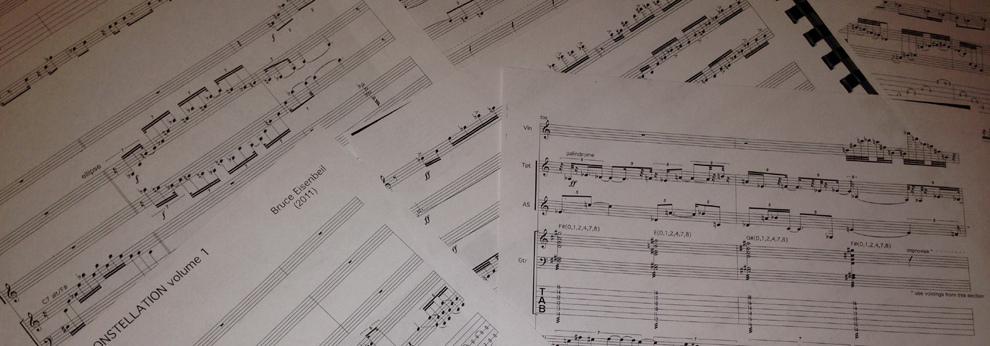

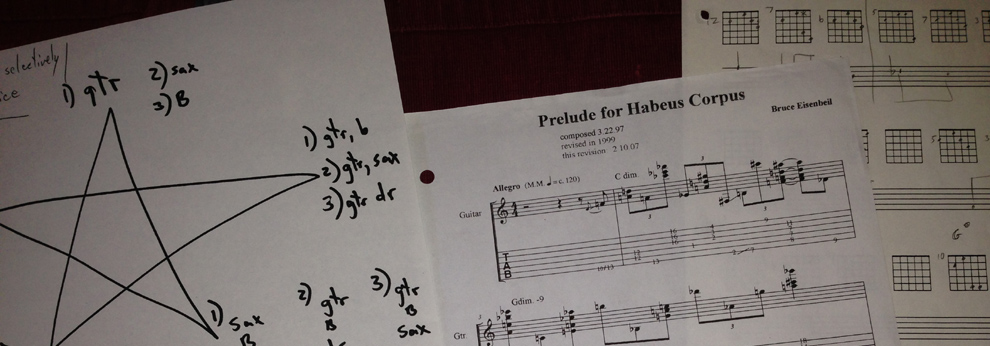
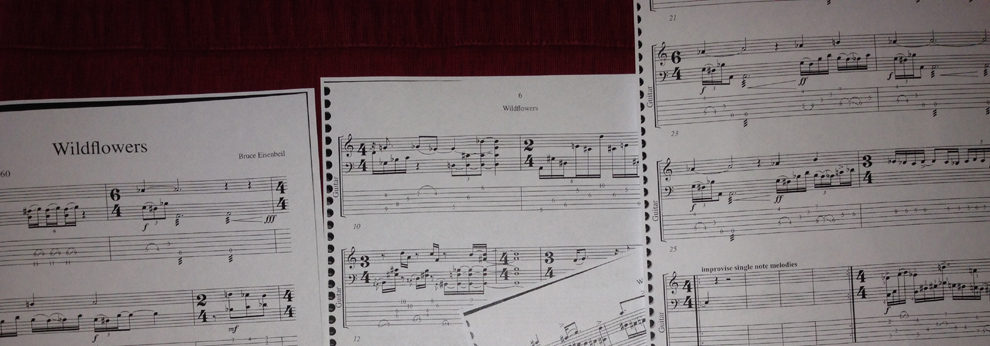








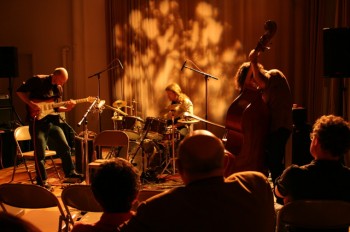
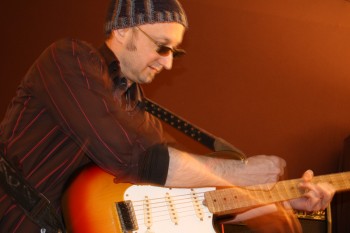
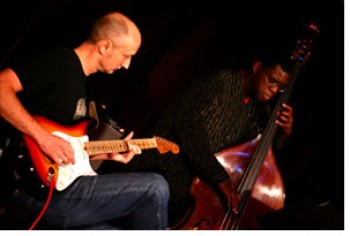
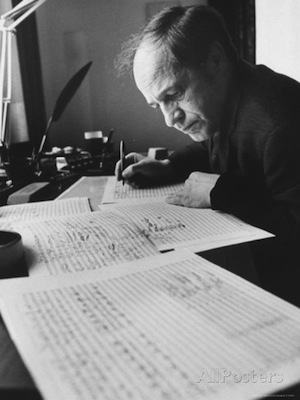
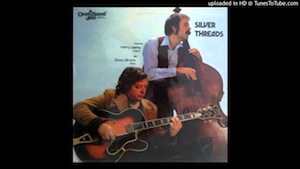
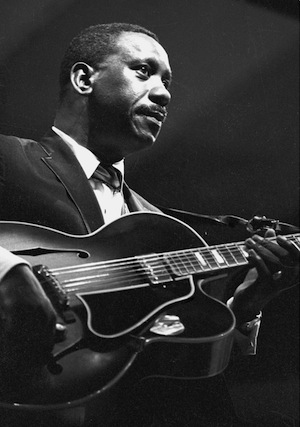


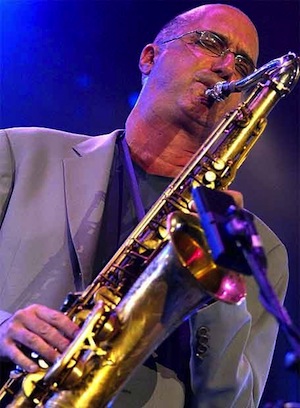

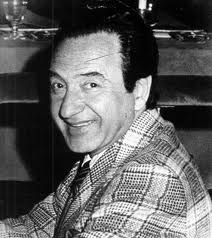
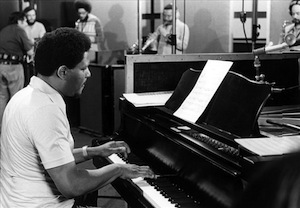



Social Profiles